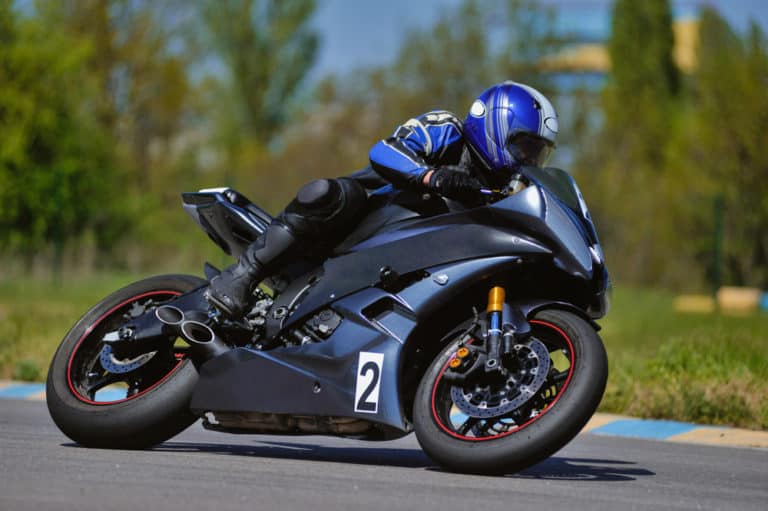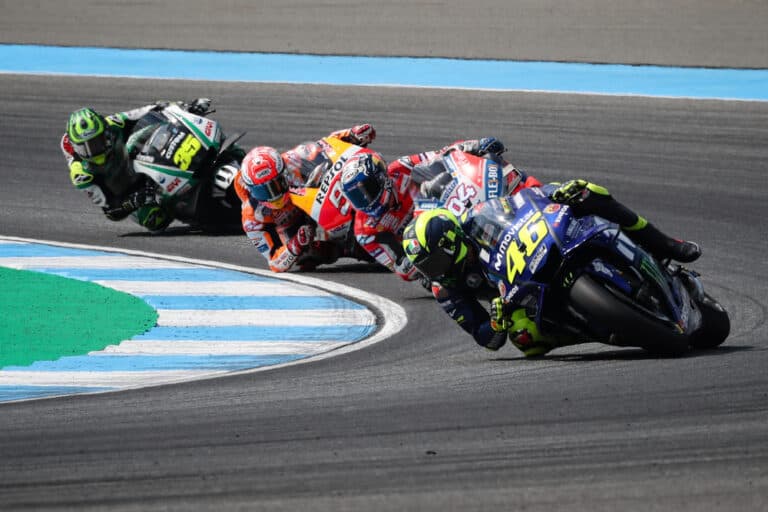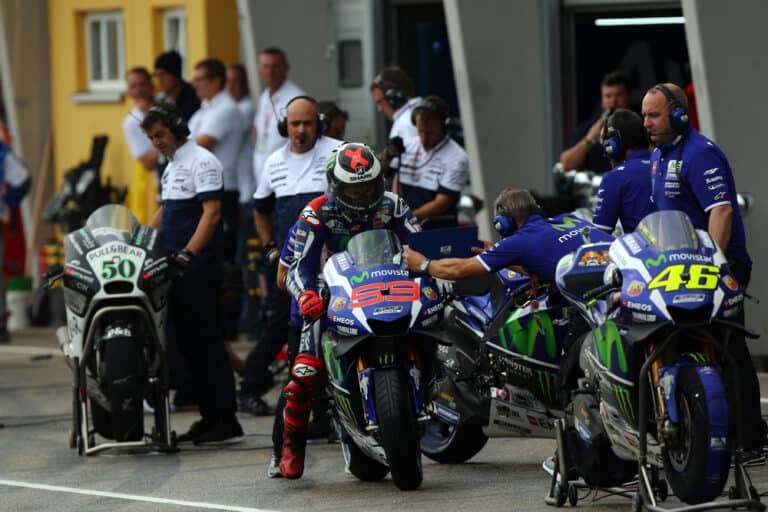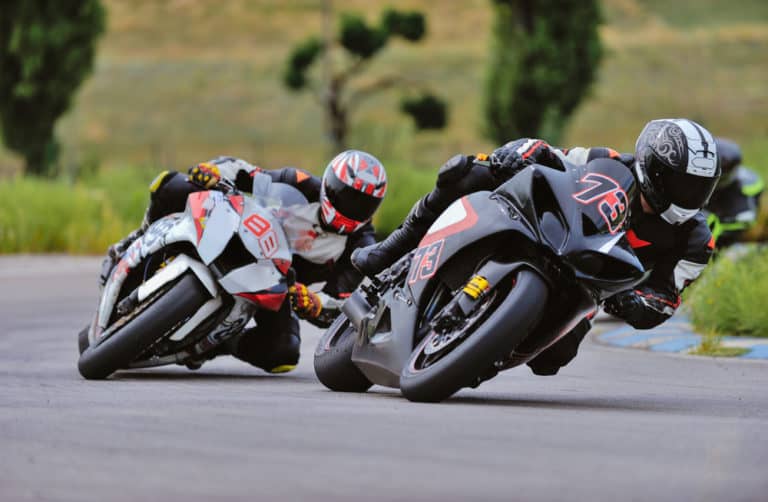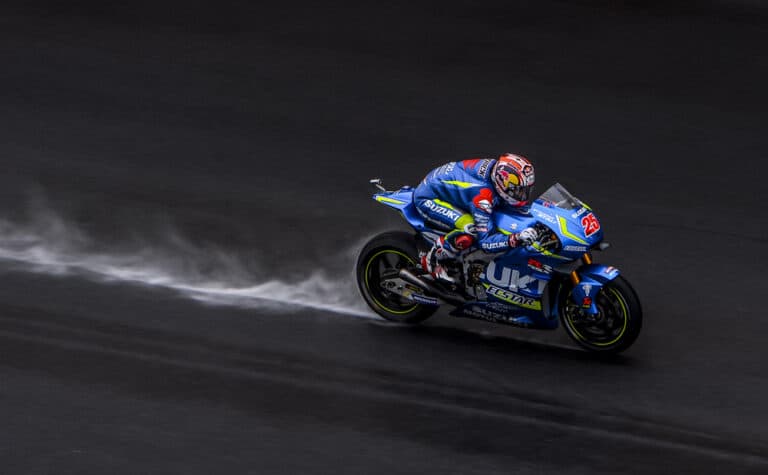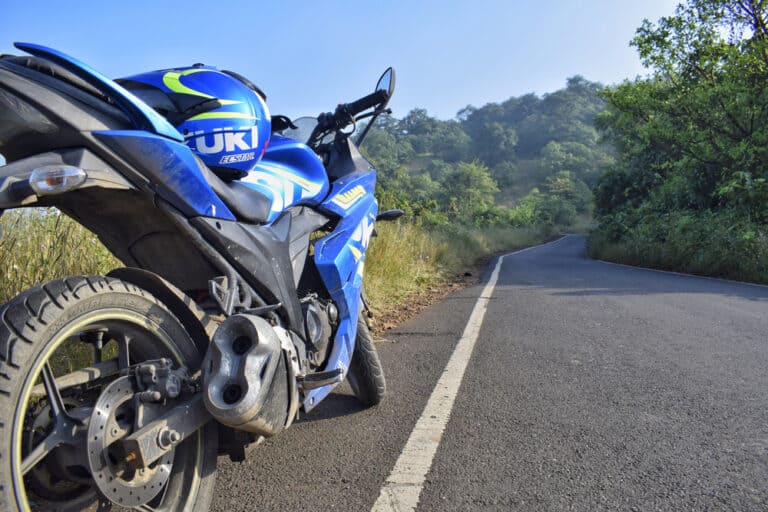Editorial credit: Francesc Juan / Shutterstock.com
MotoGP is a fast, technical sport. Adjustments and repairs to racing vehicles are often necessary throughout the duration of the race to keep them in good condition. New fans of the sport might ask the question: ‘Does MotoGP have pit stops?’.
As a rule, MotoGP does not have pit stops during races. Due to the short duration of MotoGP races, pit stops are usually unnecessary. The exception is when wet conditions emerge during a race, and riders must switch bikes or change tires to adjust to the wet track or unsafe track conditions.
Since milliseconds can win or lose a race in MotoGP, pit stops are a hot topic for discussion. Most fans, riders, and spectators have their views on whether MotoGP should have pit stops. Pit stops usually only occur for specific reasons during a race.
Do MotoGP Races Have Pit Stops?
Since MotoGP races last less than an hour, it is less common or necessary to have regular pit stops. Pit stops are not out of the question, however. Pit stops usually occur for specific reasons like wet weather conditions, red flags, or tire safety concerns.
Pit Stop Regulations In MotoGP For Wet Weather Conditions
When the track is wet during a MotoGP race, the rule is to incorporate regular pit stops to change tires or swap bikes as the track dries out from the heat of the race. Wet conditions call for treaded tires to grip the slippery track surface. When the track dries during the race, riders must swap bikes or change tires again. Slicks are used in dry conditions to ensure grip and speed.
Pit stops are mandatory during races with wet conditions or conditions changing from dry to wet or vice versa to ensure rider safety. Swapping bikes is a rule of thumb because it only takes 0.200 seconds compared to the much longer time it takes to do a tire change.
Tire Safety And Pit Stop Regulations In MotoGP Racing
MotoGP made exceptions in the past, making pit stops mandatory during some races. These races usually have tire safety concerns due to overheating as a cause of quality issues or track surface concerns due to new asphalt causing tires to overheat and burst.
In case of overheating tires, riders must change tires or swap bikes after 10 laps to ensure rider safety. The organizers will even reduce the race laps and distance if the track surface or tire quality issues cause overheating tires.
The first occurrence of inferior tire quality causing mandatory pit stops during MotoGP races goes back to 2013 when Bridgestone could not guarantee the safety of their back slick tires for more than 14 laps. Riders had to change tires or swap bikes mid-race.
Tire suppliers have since been changed from Bridgestone to Michelin. Michelin tires are performing better and are constantly being redesigned and customized to suit different conditions better.
Red Flag Pit Stops During MotoGP Races
Flag-to-flag racing usually only occurs when the track conditions are not optimal. Newly asphalted tracks, changing weather conditions during the race, or tire quality issues are the main causes of flag-to-flag races. Pit stops are required during these races to ensure rider safety. Usually, during a flag-to-flag race, riders will change bikes, giving the pit stop team time to do tire changes on the bike in the pit.
An example of a flag-to-flag MotoGP race due to track conditions is the Philips Isle race on 20 October 2013, when the newly asphalted track was so abrasive that the race director had to incorporate mandatory pit stops and shorten the race to ensure rider safety due to overheating tires.
Why Are Most MotoGP Riders Against Pit Stops?
Most MotoGP riders are against regular pit stops like in Formula 1 racing. The reasons are time, speed, and technique. In MotoGP, the difference between winning or losing can be as close as 0.018 seconds.
MotoGP riders are prepared to finish a race with one pair of tires and on one bike since every millisecond counts. The reasons mostly include the following:
- Tire changes take up time. Precision tire changes take time, tire changes are only done when the track conditions change and the safety of the riders is at stake.
- Refueling is unnecessary. MotoGP races are 20 laps and take between 40- 45min to complete. As the fuel level drops, the bike will also become slightly faster. An advantage that is necessary towards the end of a race.
- New tires need to warm up. Since fresh tires need to warm up before performing at the ultimate level, riders prefer to finish a race with the same set of tires. New tires are warmed up by either a tire warmer or driving slowly to warm up the tires before starting to race.
- Bike swaps require recalibration. Different bikes handle differently. Riders prefer to stick to one bike during a race to save milliseconds.
- Safety concerns. Coming out of the pit stop is dangerous since the probability of collision in the pit lane is greater. The new bike’s tires and carbon brakes are cold and need to heat up before they can perform.
Should MotoGP Pit Stops Become Mandatory?
Public opinion leans towards MotoGP pit stops staying as they are. In MotoGP, pit stops are usually only mandatory when the weather conditions and track conditions warrant it. For instance, riders must swap bikes to deal with dry and wet conditions, newly asphalted track surfaces, or underperforming tires.
Most MotoGP riders accept necessary pit stops but reject regular ones due to safety and timing concerns. Pit stops cost riders time due to tire changes, bike swaps, cold tires, cold brakes, and opponents winning seconds while a leading rider is in the pits. Mandatory pit stops are generally only accepted in case of an emergency and rider safety concerns.
Some riders are keen on regular pit stops for longer races to help them focus, to check gear, and to ensure optimum machine endurance and performance. The common consensus is that mandatory pit stops, like in Formula 1 races, will not be incorporated in MotoGP races.
Since MotoGP races are 20 laps, take 45min to complete, and cover about 110.9km, regular mandatory pit spots are deemed excessive by most riders, spectators, and fans.
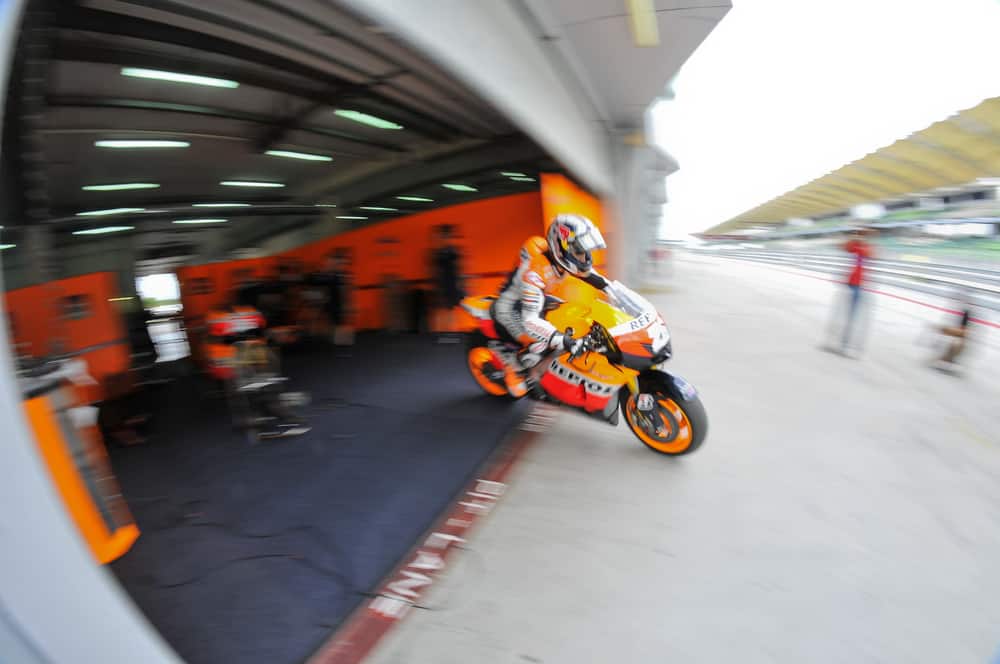
Conclusion
Since MotoGP pit stops are not mandatory, the sport will continue to focus on high-performance bikes, quality tires, and technique to finish a race successfully. Pit stops are only used and accepted when necessary due to changing track conditions or safety concerns. Pit stops will remain mandatory during wet track conditions and optional during dry track conditions.
References
- https://www.quora.com/Are-there-pit-stops-in-MotoGP
- https://www.quora.com/If-MotoGP-did-have-pit-stops-what-would-need-changing-and-how-long-would-it-take
- https://www.crash.net/motogp/feature/197270/1/motogp-stars-against-more-pit-stop-races
- https://www.roadracingworld.com/news/tire-safety-concerns-lead-to-mandatory-pit-stops-in-motogp-shortened-race-distance-in-moto2-at-phillip-island/
- https://www.motorsport.com/motogp/news/record-first-compulsory-bike-change-introduced-to-motogp/442015/

